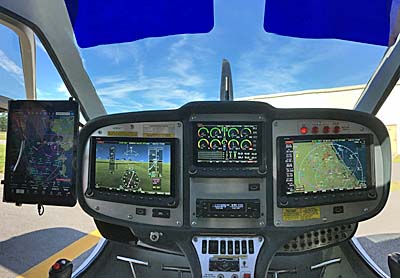
When Rotax moved their 912 iS Sport project from engineering to production, the big Austrian engine manufacturer elevated their already-immensely-popular 9-series engines to a higher level. Beside fuel injection, the company added electronic engine controls more advanced than any other in their inventory. If you’ve flown with the iS Sport as I have you know it has terrific performance — torque was increased through an enlarged airbox along with other minor refinements — plus it gives even better fuel consumption. When flying with Aerosports‘ Jeremy Knoll at DeLand 2017, I heard that his trip from Wisconsin to Florida in the TAF Sling yielded fuel consumption rates of 2.7 gallons per hour at cruise. Man! That is some fuel efficient flying and that is part of what Rotax achieved with their iS model. They will use that technology plus more on their coming 135-horsepower 915 iS due on the market next year.


 I was one of those frustrated pilots, thanks to early experience with Lane A/B lights.
I had flown with a flock of Light-Sport Airplanes to the Bahamas. We had long over-water stretches. When you fly out of sight of all land in a single engine airplane, the pucker factor tends to rise.
Being a modestly-experienced Bahamas island-hopping LSA pilot, I figured to take off last from the Nassau-to-Bimini flight. The other pilots fired up, taxied out, and launched into the air. My cabin mate and I, aviation journalist James Lawrence, tried to follow but on firing up, I had a red lane B light that would not go off after doing the usual checks. I would not commit to flight over lots of water with a red light staring back at me and I had no one nearby to consult as to the problem.
Therein lies the problem. What was wrong?
It turned out to be a connector that did not maintain contact. Nothing whatsoever was wrong with the engine, explaining why the light went off later and we were able to launch and fly without incident to the other island. Nonetheless, whatever that had been nagged at me, stealing a bit of the joy of flight as I was uninformed.
I was one of those frustrated pilots, thanks to early experience with Lane A/B lights.
I had flown with a flock of Light-Sport Airplanes to the Bahamas. We had long over-water stretches. When you fly out of sight of all land in a single engine airplane, the pucker factor tends to rise.
Being a modestly-experienced Bahamas island-hopping LSA pilot, I figured to take off last from the Nassau-to-Bimini flight. The other pilots fired up, taxied out, and launched into the air. My cabin mate and I, aviation journalist James Lawrence, tried to follow but on firing up, I had a red lane B light that would not go off after doing the usual checks. I would not commit to flight over lots of water with a red light staring back at me and I had no one nearby to consult as to the problem.
Therein lies the problem. What was wrong?
It turned out to be a connector that did not maintain contact. Nothing whatsoever was wrong with the engine, explaining why the light went off later and we were able to launch and fly without incident to the other island. Nonetheless, whatever that had been nagged at me, stealing a bit of the joy of flight as I was uninformed.
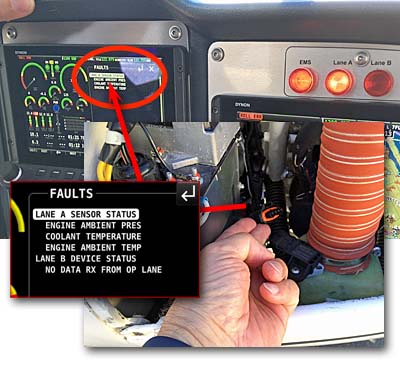 No more, thanks to Dynon and guys like John Hurst who works closely with the west coast avionics provider.
Now, as the images show, you can ask your Dynon HDX Touch SkyView instrument for the reason, and it will list for you what is wrong. Some problems need to be fixed when able. Others might have to ground the flight until remedied. Wouldn't you want to know which it is?
"This update happened partly because of your early experience, Dan," clarified John. "Now the pilot can know the reason the light came on and can make an informed decision."
Thanks, John and
No more, thanks to Dynon and guys like John Hurst who works closely with the west coast avionics provider.
Now, as the images show, you can ask your Dynon HDX Touch SkyView instrument for the reason, and it will list for you what is wrong. Some problems need to be fixed when able. Others might have to ground the flight until remedied. Wouldn't you want to know which it is?
"This update happened partly because of your early experience, Dan," clarified John. "Now the pilot can know the reason the light came on and can make an informed decision."
Thanks, John and 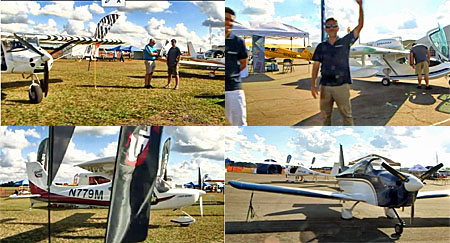
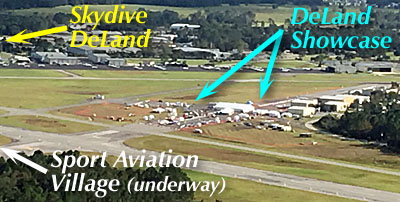
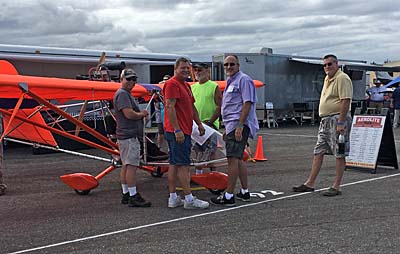
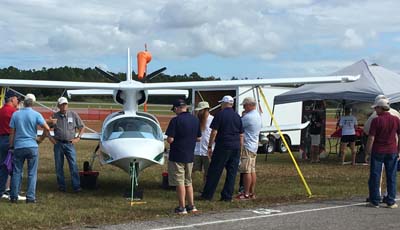
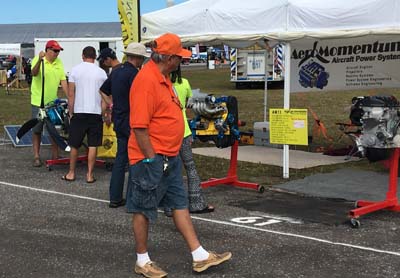

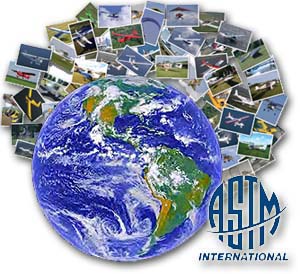 1—LSA lead Aircraft deliveries around the globe. Does that sound hard to believe? You must look globally. While the American fleet is around 4,000 aircraft plus used LSA (nothing to sneer at, IMHO), in less than two decades more than 65,000 LSA or LSA-like aircraft have been delivered around the world. This is 3:1 compared to TC Aircraft — 2015 data show 969 Type Certified single engine piston aircraft delivered versus 3,000 LSA / LSA-like. For more detail, see our
1—LSA lead Aircraft deliveries around the globe. Does that sound hard to believe? You must look globally. While the American fleet is around 4,000 aircraft plus used LSA (nothing to sneer at, IMHO), in less than two decades more than 65,000 LSA or LSA-like aircraft have been delivered around the world. This is 3:1 compared to TC Aircraft — 2015 data show 969 Type Certified single engine piston aircraft delivered versus 3,000 LSA / LSA-like. For more detail, see our 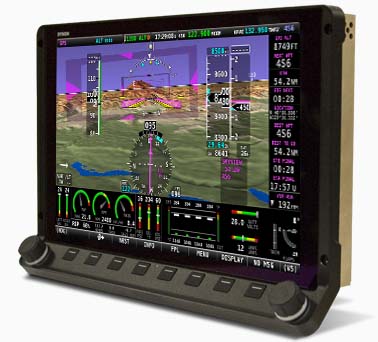
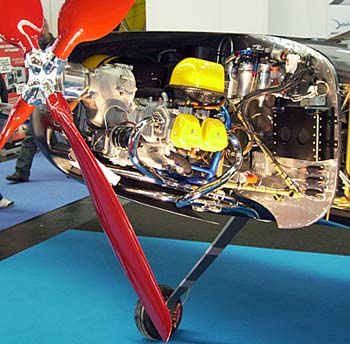 5—Engineers have introduced new concepts in LSA powerplants. Engines lead by market leader
5—Engineers have introduced new concepts in LSA powerplants. Engines lead by market leader 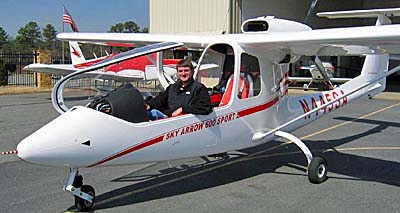
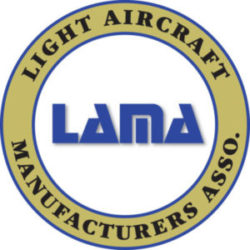 All these initiatives are still a work-in-process, but LAMA and its partner the
All these initiatives are still a work-in-process, but LAMA and its partner the  We spent the first day of the second year of this event zooming around
We spent the first day of the second year of this event zooming around 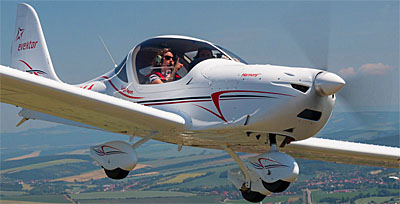 My video partner must be working around the clock as he prepared a blizzard of videos for release starting November 1st.
As you see in the list below, 20 videos will soon be available. I hope you'll enjoy them.
Besides giving you info on various aircraft to see at the event, we hope to encourage you to attend
My video partner must be working around the clock as he prepared a blizzard of videos for release starting November 1st.
As you see in the list below, 20 videos will soon be available. I hope you'll enjoy them.
Besides giving you info on various aircraft to see at the event, we hope to encourage you to attend  According to a local newspaper, "More than 6,000 people are expected on the DeLand Municipal Airport Thursday, November 2 through Saturday, the 4th, to inspect more than 100 aircraft."
The reporter went on to say that DeLand expects to "top the 1,000 flight operations recorded last year."
Hours all three days are 9 AM to 5 PM. General admission for adults costs $20 each day, or $40 for a three-day pass. Lower prices are available for youth aged 11-17 and kids under 10 get in free. The entrance and free parking for DeLand Showcase are off Industrial Way on the northwest side of the airport.
Here's the posting schedule for the gusher of videos you can watch. All these aircraft are expected at DeLand.
According to a local newspaper, "More than 6,000 people are expected on the DeLand Municipal Airport Thursday, November 2 through Saturday, the 4th, to inspect more than 100 aircraft."
The reporter went on to say that DeLand expects to "top the 1,000 flight operations recorded last year."
Hours all three days are 9 AM to 5 PM. General admission for adults costs $20 each day, or $40 for a three-day pass. Lower prices are available for youth aged 11-17 and kids under 10 get in free. The entrance and free parking for DeLand Showcase are off Industrial Way on the northwest side of the airport.
Here's the posting schedule for the gusher of videos you can watch. All these aircraft are expected at DeLand.
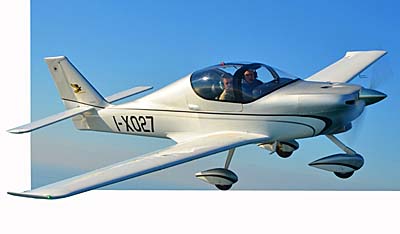
 Nov. 1, 2017 10 a.m.
Nov. 1, 2017 10 a.m. 
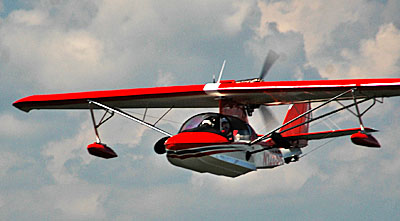 Nov. 1, 2017 8 p.m.
Nov. 1, 2017 8 p.m. 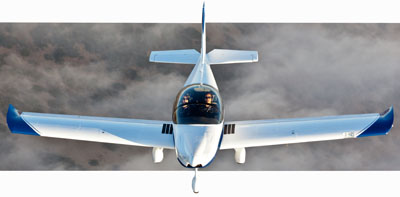 Nov. 1, 2017 11 p.m.
Nov. 1, 2017 11 p.m. 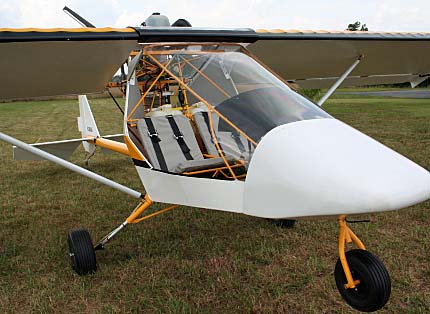 However, Kolb has always had a problem. They build taildraggers.
After generations of pilots were trained in tricycle gear airplanes, many pilots aren't sure about their ability to handle a taildragger. When landed other than straight and true, a tricycle gear airplane auto-corrects, swinging toward the nosewheel. A taildragger can, if handled poorly, result in the dreaded ground loop, meaning that the tail can swing to the side, potentially causing a wingtip to touch the ground.
Kolb models have such a shallow deck angle (meaning the nose does not sit well above the tail) so this taildragger "problem" is almost invisible, but that doesn't change the fear many pilots have for the once-standard gear arrangement.
However, Kolb has always had a problem. They build taildraggers.
After generations of pilots were trained in tricycle gear airplanes, many pilots aren't sure about their ability to handle a taildragger. When landed other than straight and true, a tricycle gear airplane auto-corrects, swinging toward the nosewheel. A taildragger can, if handled poorly, result in the dreaded ground loop, meaning that the tail can swing to the side, potentially causing a wingtip to touch the ground.
Kolb models have such a shallow deck angle (meaning the nose does not sit well above the tail) so this taildragger "problem" is almost invisible, but that doesn't change the fear many pilots have for the once-standard gear arrangement.
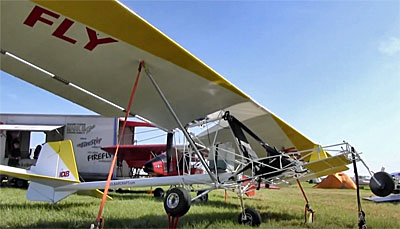 FireStar II delivers "great climb performance with the Hirth 3202 engine but can be fitted with the Rotax 582 engine," said Kolb's Bryan Melborn. Hirth is the standard engine for the FireStar II SS mated to a 2.58:1 gear reduction drive swinging a 66-inch diameter fixed pitch propeller. This combination gives outrageous climb performance (as our video below demonstrates) with a top speed of 80 mph.
"It takes very little power to maintain minimum flying speed in a FireStar II SS," Bryan added, "and such slower flying is more enjoyable because of engine noise and fuel consumption are at a minimum."
Handling Kolb aircraft is a wonderful experience. Like all Kolb models, FireStar II SS uses traditional cable and push-pull tube controls which yield a solid feel. Half-span ailerons offer good roll authority at higher speeds while still being powerful enough at lower speeds to retain roll control even through a stall.
"Optional hydraulic brakes provide for sure stops so the FireStar II SS can be landed and stopped in very tight areas," noted Bryan. Differential braking using heel pedals allows for a tighter turning radius which further improves excellent ground handling.
FireStar II delivers "great climb performance with the Hirth 3202 engine but can be fitted with the Rotax 582 engine," said Kolb's Bryan Melborn. Hirth is the standard engine for the FireStar II SS mated to a 2.58:1 gear reduction drive swinging a 66-inch diameter fixed pitch propeller. This combination gives outrageous climb performance (as our video below demonstrates) with a top speed of 80 mph.
"It takes very little power to maintain minimum flying speed in a FireStar II SS," Bryan added, "and such slower flying is more enjoyable because of engine noise and fuel consumption are at a minimum."
Handling Kolb aircraft is a wonderful experience. Like all Kolb models, FireStar II SS uses traditional cable and push-pull tube controls which yield a solid feel. Half-span ailerons offer good roll authority at higher speeds while still being powerful enough at lower speeds to retain roll control even through a stall.
"Optional hydraulic brakes provide for sure stops so the FireStar II SS can be landed and stopped in very tight areas," noted Bryan. Differential braking using heel pedals allows for a tighter turning radius which further improves excellent ground handling.
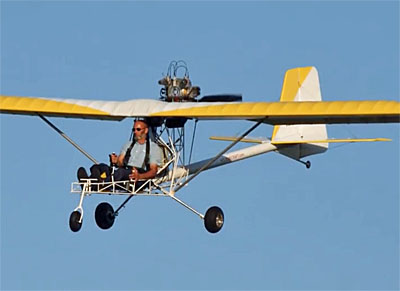 Previous customers who built the older tandem configuration are not left out. Bryan said, "We use stock FireStar wings and tail feathers, so if you own a FireStar II tandem seat, you can purchase a new cage and a boom tube from Kolb Aircraft and fit your wings, tail feathers, engine, and instruments to it and convert to side by side.
Previous customers who built the older tandem configuration are not left out. Bryan said, "We use stock FireStar wings and tail feathers, so if you own a FireStar II tandem seat, you can purchase a new cage and a boom tube from Kolb Aircraft and fit your wings, tail feathers, engine, and instruments to it and convert to side by side. 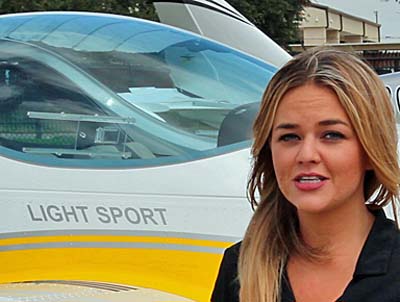 Every pilot I know… every aviation organization… every aviation government official… all acknowledge the same requirement for the future of aviation. We need more younger people entering this activity that we current pilots enjoy so much. I feel sure you agree.
However, despite the efforts of many smart people over many decades, the number of younger folks in aviation is smaller than we might like.
Now, let's be clear. This is not an epic failure. We do have younger pilots involved today. Do you doubt this statement? If so, you are not alone but you may be wrong.
Consider this part of
Every pilot I know… every aviation organization… every aviation government official… all acknowledge the same requirement for the future of aviation. We need more younger people entering this activity that we current pilots enjoy so much. I feel sure you agree.
However, despite the efforts of many smart people over many decades, the number of younger folks in aviation is smaller than we might like.
Now, let's be clear. This is not an epic failure. We do have younger pilots involved today. Do you doubt this statement? If so, you are not alone but you may be wrong.
Consider this part of 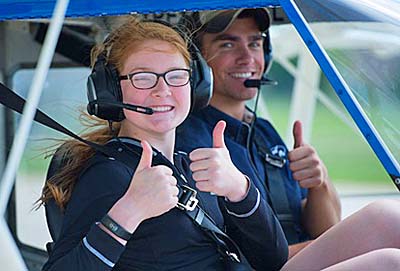 Let me repeat for emphasis. The second-largest group of pilots in an age range (20-35 years old) is almost as large as the one we think dominates (50-64 years old). Notice that each group contains pilots from a similar age range (15 years).
Even if you accept those figures, it remains true that we need more young pilots.
Let me repeat for emphasis. The second-largest group of pilots in an age range (20-35 years old) is almost as large as the one we think dominates (50-64 years old). Notice that each group contains pilots from a similar age range (15 years).
Even if you accept those figures, it remains true that we need more young pilots.
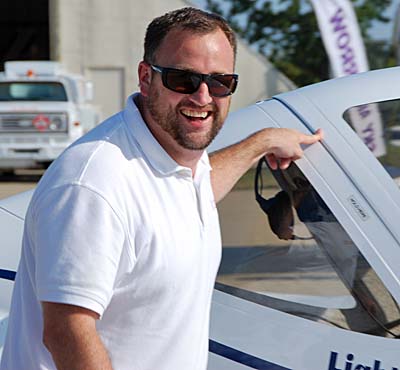 One man is working to change the "youth problem" in his own unique way. You may already know him from his days directing the
One man is working to change the "youth problem" in his own unique way. You may already know him from his days directing the 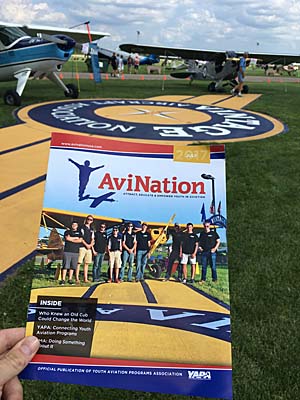 "AviNation is published four times a year and is distributed to FBOs, universities and trade events throughout the country, connecting advertisers and contributors with industry professionals, enthusiasts and of course, those that will continue to push the industry forward.
"AviNation, a special opportunity for a special industry."
"AviNation is published four times a year and is distributed to FBOs, universities and trade events throughout the country, connecting advertisers and contributors with industry professionals, enthusiasts and of course, those that will continue to push the industry forward.
"AviNation, a special opportunity for a special industry."
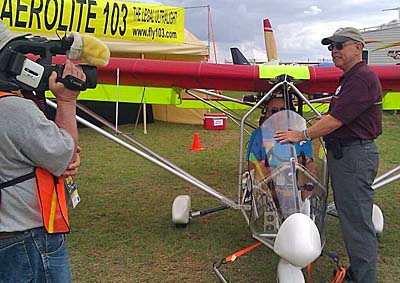 Like literally billions of other people, I've come to depend on YouTube videos, whether for pure entertainment or when I'm trying to fix something in my house or on my car. As you probably know, YouTube will almost certainly have not one video to help or delight you, but dozens …on the same topic. More than 300 hours of video are uploaded to Google's computers every minute of the day, 24x7. Amazing! More than 5 billion videos are watched every day by more than 1.3 billion people (and that's without China's 1.3 billion people as the government does not allow YouTube in that nation).
However, this post is not to sing the praises of YouTube but to bring to your attention the yeoman's work done by my video partner, Dave Loveman, whom I've come to call "Videoman Dave," because unlike yours truly, he tends to shy away from being the on-camera guy or even promoting his name.
Like literally billions of other people, I've come to depend on YouTube videos, whether for pure entertainment or when I'm trying to fix something in my house or on my car. As you probably know, YouTube will almost certainly have not one video to help or delight you, but dozens …on the same topic. More than 300 hours of video are uploaded to Google's computers every minute of the day, 24x7. Amazing! More than 5 billion videos are watched every day by more than 1.3 billion people (and that's without China's 1.3 billion people as the government does not allow YouTube in that nation).
However, this post is not to sing the praises of YouTube but to bring to your attention the yeoman's work done by my video partner, Dave Loveman, whom I've come to call "Videoman Dave," because unlike yours truly, he tends to shy away from being the on-camera guy or even promoting his name.
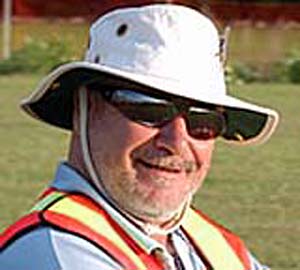
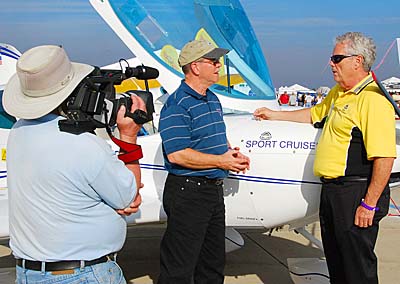
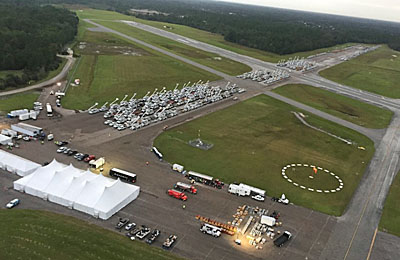
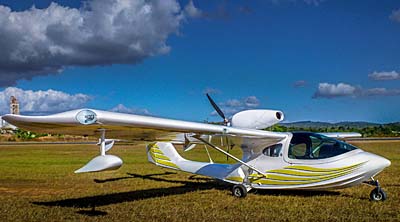 Seamax LSA Seaplane
Seamax LSA Seaplane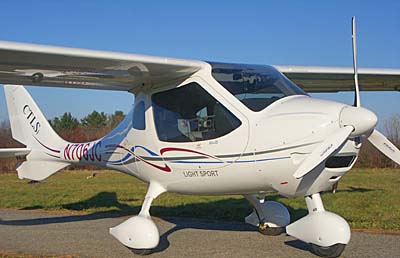 Flight Design USA
Flight Design USA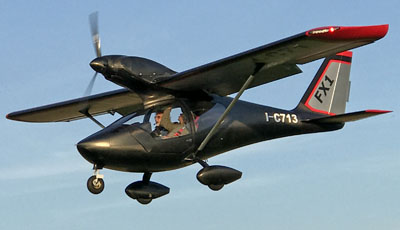 Aeropilot L600 and New FX1
Aeropilot L600 and New FX1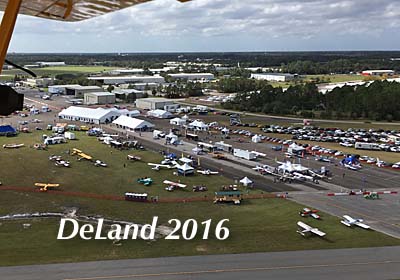 Aeropilot USA
Aeropilot USA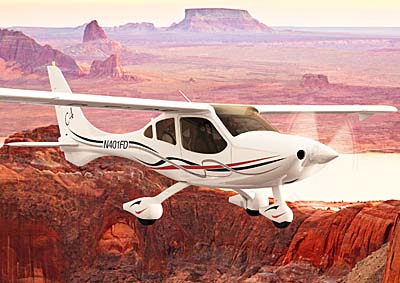

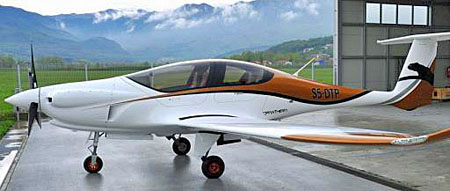
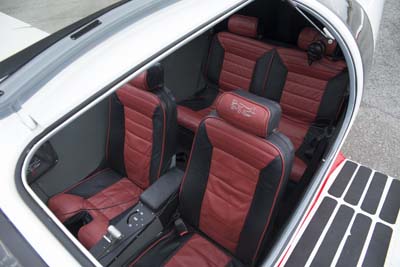

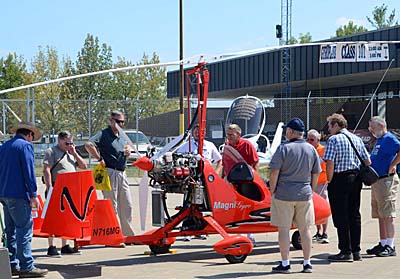
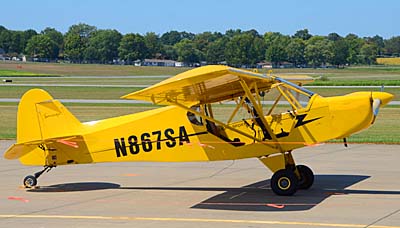

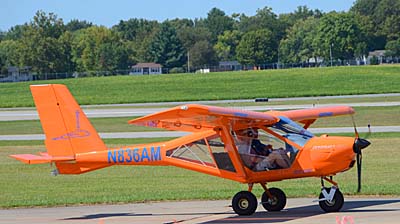
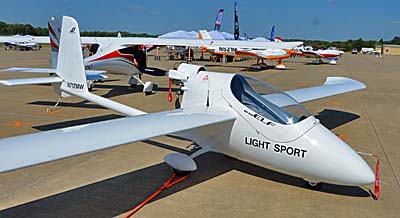
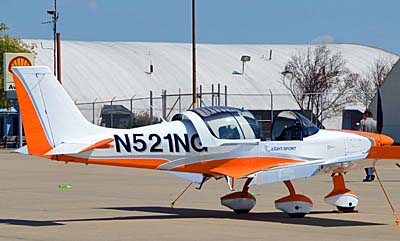
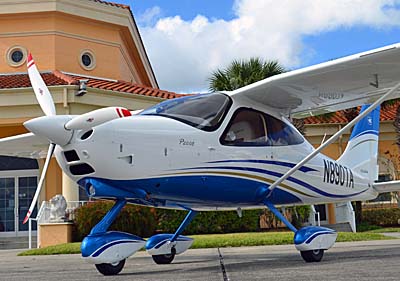
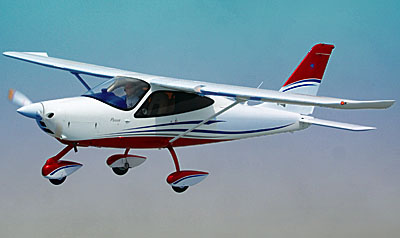
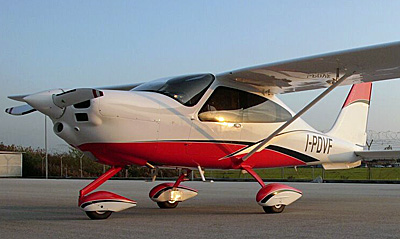
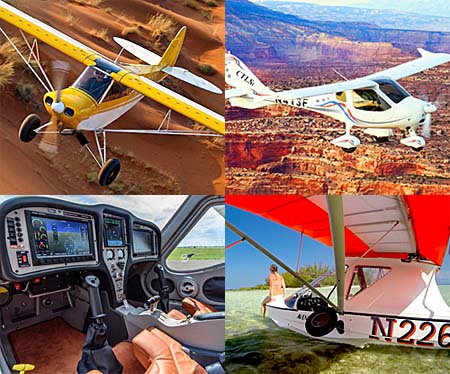 When I started this website back in 2004, even before Light-Sport Aircraft officially arrived on the aviation scene, I began by uploading hundreds of pilot reports that had appeared in various aviation magazines. Most were very detailed descriptions of many ultralights (both single and two seaters) and light kit aircraft. After flying nearly 400 models, I had information that most buyers lacked, so I often took questions that were similar to, "You've flown all these airplanes. Which one should I buy?"
The question turns out to be impossible to answer. It is something like asking me, "Which color car is best?" The answer depends on what you want. What I like is nearly meaningless unless your desires are almost identical to mine …and that's very unlikely. If we spoke long enough at an airshow, perhaps I could learn enough about you — your experience, your home location, your expected use of an aircraft, your spending budget, and much more — such that I might advise you what might work for you.
I would rarely have that much time and even if I did, I only answered the question for one person. That is a definition of inefficient.
When I started this website back in 2004, even before Light-Sport Aircraft officially arrived on the aviation scene, I began by uploading hundreds of pilot reports that had appeared in various aviation magazines. Most were very detailed descriptions of many ultralights (both single and two seaters) and light kit aircraft. After flying nearly 400 models, I had information that most buyers lacked, so I often took questions that were similar to, "You've flown all these airplanes. Which one should I buy?"
The question turns out to be impossible to answer. It is something like asking me, "Which color car is best?" The answer depends on what you want. What I like is nearly meaningless unless your desires are almost identical to mine …and that's very unlikely. If we spoke long enough at an airshow, perhaps I could learn enough about you — your experience, your home location, your expected use of an aircraft, your spending budget, and much more — such that I might advise you what might work for you.
I would rarely have that much time and even if I did, I only answered the question for one person. That is a definition of inefficient.
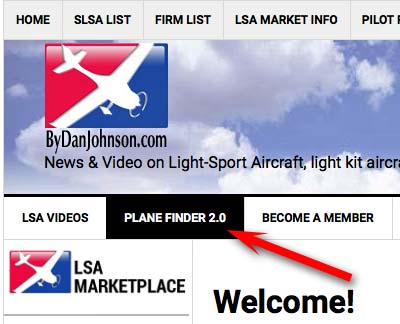 Thus came PlaneFinder. Version 1.0 was a series of three articles for EAA Sport Pilot magazine (since discontinued as a publication). The three articles were a lot of work for me, and for readers. At the end, maybe you knew what to buy …but possibly not. It was a worthy first effort, you might agree, but it was not the right solution.
So,
Thus came PlaneFinder. Version 1.0 was a series of three articles for EAA Sport Pilot magazine (since discontinued as a publication). The three articles were a lot of work for me, and for readers. At the end, maybe you knew what to buy …but possibly not. It was a worthy first effort, you might agree, but it was not the right solution.
So, 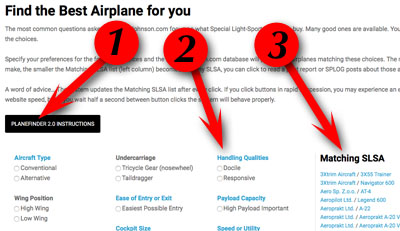
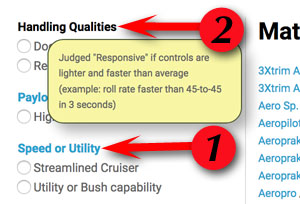

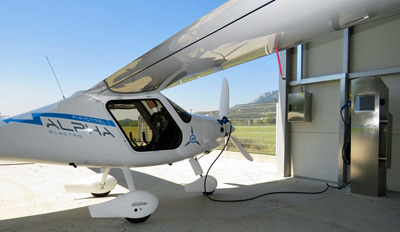 "The goal of the project was the production and installation of a (public) charging station for electric airplanes, because the need for a stationary type of charging has been shown," wrote the company.
On August 30th, 2017 the electric charging station was officially turned on at the Pipistrel company and was used to charge one of their Alpha Electro aircraft. The project was "financed by the Ministry of Education, Science and Sport and the European Union from the European Social Fund."
"The goal of the project was the production and installation of a (public) charging station for electric airplanes, because the need for a stationary type of charging has been shown," wrote the company.
On August 30th, 2017 the electric charging station was officially turned on at the Pipistrel company and was used to charge one of their Alpha Electro aircraft. The project was "financed by the Ministry of Education, Science and Sport and the European Union from the European Social Fund."
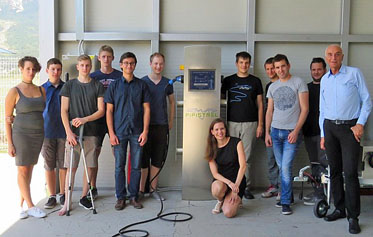 In Pipistrel's 25 years, the Slovenian company has produced 600 aircraft of the Sinus-Virus family (the ones most familiar to Americans) plus 120 aircraft of the Taurus-Apis family (motorgliders and gliders). Together with approximately 500 weight shift trikes — the aircraft that started this company back in Soviet times — Pipistrel has manufacturered about 1,300 aircraft.
In Pipistrel's 25 years, the Slovenian company has produced 600 aircraft of the Sinus-Virus family (the ones most familiar to Americans) plus 120 aircraft of the Taurus-Apis family (motorgliders and gliders). Together with approximately 500 weight shift trikes — the aircraft that started this company back in Soviet times — Pipistrel has manufacturered about 1,300 aircraft. 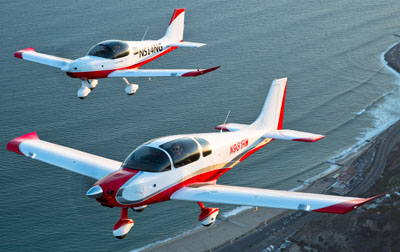 "Oshkosh is all about airplanes, right?" asked
"Oshkosh is all about airplanes, right?" asked 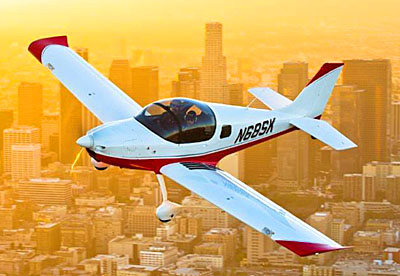
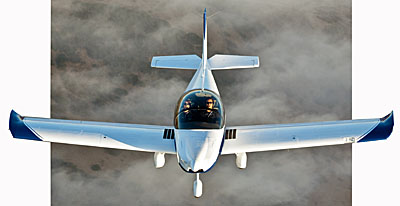 Vastly easier demo flying can be done at events like the just-concluded
Vastly easier demo flying can be done at events like the just-concluded 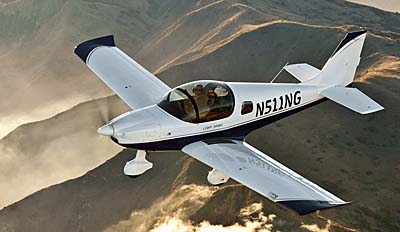 To keep up with demand and spark more TAF-USA hired Barry Jay as North American Sales and Marketing Manager, who will work closely with Matt Liknaitzky and Jean D'Assonville. "Barry comes to us with decades of experience in the general aviation and automotive industries," said The Airplane Factory USA. Jay has sold new Piper and Mooney aircraft, managed Lexus national advertising and worked with Toyota's aviation business development department." A private pilot with over 900 hours, Barry has been a member of the Sling Flying Club for over four years and has been a strong promoter of The Airplane Factory brand. An FAA Safety Team Representative, Barry was also recently reelected to the post of President of the Torrance Airport Association for a twelfth term.
To keep up with demand and spark more TAF-USA hired Barry Jay as North American Sales and Marketing Manager, who will work closely with Matt Liknaitzky and Jean D'Assonville. "Barry comes to us with decades of experience in the general aviation and automotive industries," said The Airplane Factory USA. Jay has sold new Piper and Mooney aircraft, managed Lexus national advertising and worked with Toyota's aviation business development department." A private pilot with over 900 hours, Barry has been a member of the Sling Flying Club for over four years and has been a strong promoter of The Airplane Factory brand. An FAA Safety Team Representative, Barry was also recently reelected to the post of President of the Torrance Airport Association for a twelfth term.
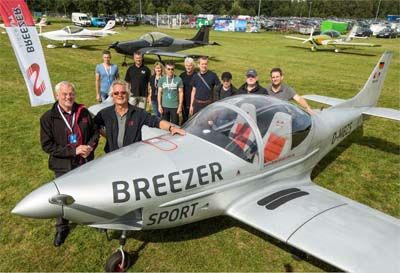 In a eNewsletter to what they call "Breezerians," the German company with the same name as their model reported a festive debut to their newest model called Breezer Sport.
In a eNewsletter to what they call "Breezerians," the German company with the same name as their model reported a festive debut to their newest model called Breezer Sport.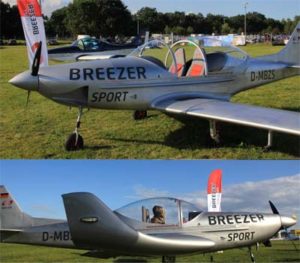 Here's our earlier looks at
Here's our earlier looks at 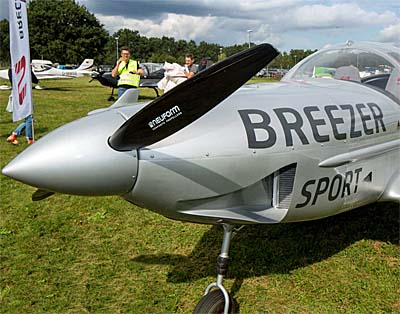 "Today, we can do things differently and that’s why the Breezer Sport has a totally different approach. Plus, the current integration of 3D CAD/CAM systems enables us to create form factors meeting the expectations of strength and performance." Breezer Sport is not only an enhancement of the B400/B600, series they say. "It is a completely new aircraft with totally different technology approaches."
"Today, we can do things differently and that’s why the Breezer Sport has a totally different approach. Plus, the current integration of 3D CAD/CAM systems enables us to create form factors meeting the expectations of strength and performance." Breezer Sport is not only an enhancement of the B400/B600, series they say. "It is a completely new aircraft with totally different technology approaches."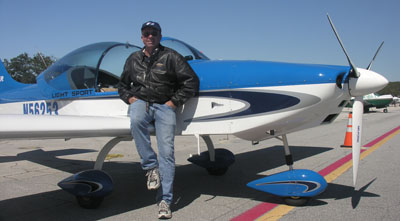
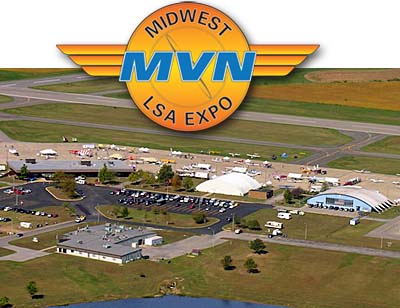


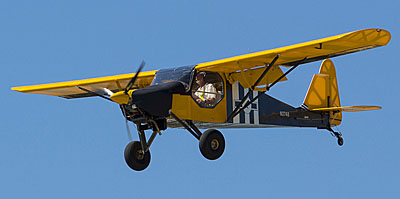 Belite entrepreneur James Weibe has successfully used his tech industry background to raise interest for his latest project, this time his first two seater called Chipper. (It was named Pipper but that apparently energized the anxieties of Piper Aircraft lawyers so James altered the name.)
James has informed his Facebook and email readers with continual updates. After making initial flights fairly recently, he has judged the aircraft able to make a cross country flight.
Chipper uses power from the 912
Belite entrepreneur James Weibe has successfully used his tech industry background to raise interest for his latest project, this time his first two seater called Chipper. (It was named Pipper but that apparently energized the anxieties of Piper Aircraft lawyers so James altered the name.)
James has informed his Facebook and email readers with continual updates. After making initial flights fairly recently, he has judged the aircraft able to make a cross country flight.
Chipper uses power from the 912 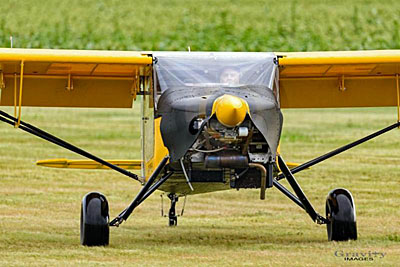 "I flew Chipper to Angel Fire, New Mexico," James exclaimed. "I flew nonstop one way (960 miles roundtrip) from Wichita, Kansas to Angel Fire, performed flight tests, and then returned to Marion, Kansas before the sunset." Now that's a good day's flying.
"Angel Fire is the fourth highest elevation airport in the United States at 8,322 feet above sea level," James reported. "Density altitude was 10,400 feet." Three conditions can degrade aircraft performance at altitude: higher elevation, higher temperature, and higher humidity. The latter is not much of a problem in desert-like New Mexico but all affect aircraft performance. (Humid air, made up of water vapor, is less also dense.)
In my experience, operating at more than 10,000 feet density altitude causes a Cessna 150 or 172 to take significantly more runway to get airborne and climb performance can be sharply reduced.
"I flew Chipper to Angel Fire, New Mexico," James exclaimed. "I flew nonstop one way (960 miles roundtrip) from Wichita, Kansas to Angel Fire, performed flight tests, and then returned to Marion, Kansas before the sunset." Now that's a good day's flying.
"Angel Fire is the fourth highest elevation airport in the United States at 8,322 feet above sea level," James reported. "Density altitude was 10,400 feet." Three conditions can degrade aircraft performance at altitude: higher elevation, higher temperature, and higher humidity. The latter is not much of a problem in desert-like New Mexico but all affect aircraft performance. (Humid air, made up of water vapor, is less also dense.)
In my experience, operating at more than 10,000 feet density altitude causes a Cessna 150 or 172 to take significantly more runway to get airborne and climb performance can be sharply reduced.
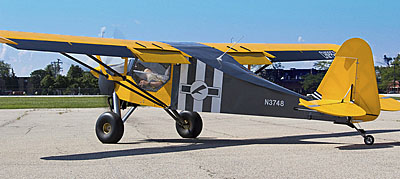 "Chipper's takeoff roll length was 600 feet," said a proud James. "Why did they make the runway 8,900 feet long at Angel Fire," James wondered with a twinkle in his eye?
"Climbout was greater than 200 fpm," he added. Now that's not nearly as fast as a 80-horsepower Chipper would perform at sea level but it's better than a Cessna 150. "Everything in the pattern was normal," James continued, "it just took longer to climb."
For his evaluation, Chipper's test weight was 950 pounds. He observed that a normally-aspirated (carbureted) 80-horsepower Rotax develops 52 horsepower at Angel Fire's pattern altitude.
"Chipper's takeoff roll length was 600 feet," said a proud James. "Why did they make the runway 8,900 feet long at Angel Fire," James wondered with a twinkle in his eye?
"Climbout was greater than 200 fpm," he added. Now that's not nearly as fast as a 80-horsepower Chipper would perform at sea level but it's better than a Cessna 150. "Everything in the pattern was normal," James continued, "it just took longer to climb."
For his evaluation, Chipper's test weight was 950 pounds. He observed that a normally-aspirated (carbureted) 80-horsepower Rotax develops 52 horsepower at Angel Fire's pattern altitude.

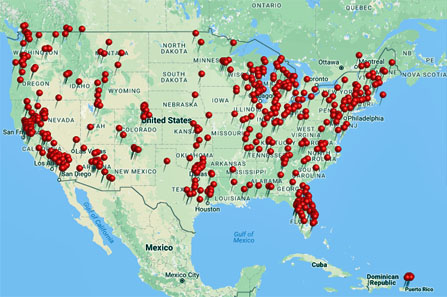
 Brian and Carol have created a valuable service by their work for more than a decade. The LSA industry is lucky to have them hard at work.
Brian and Carol have created a valuable service by their work for more than a decade. The LSA industry is lucky to have them hard at work.